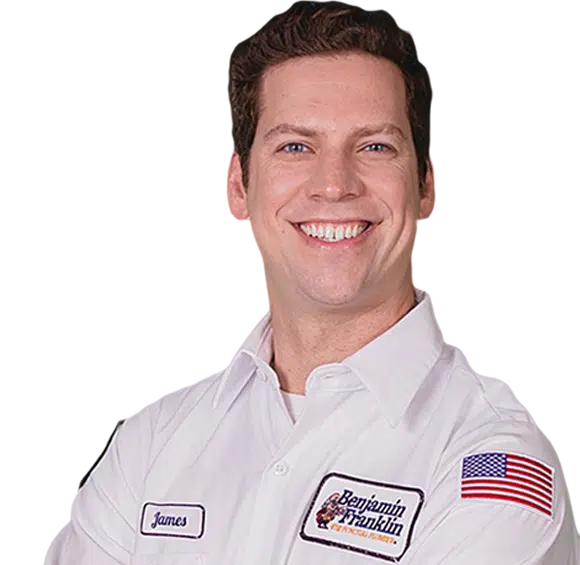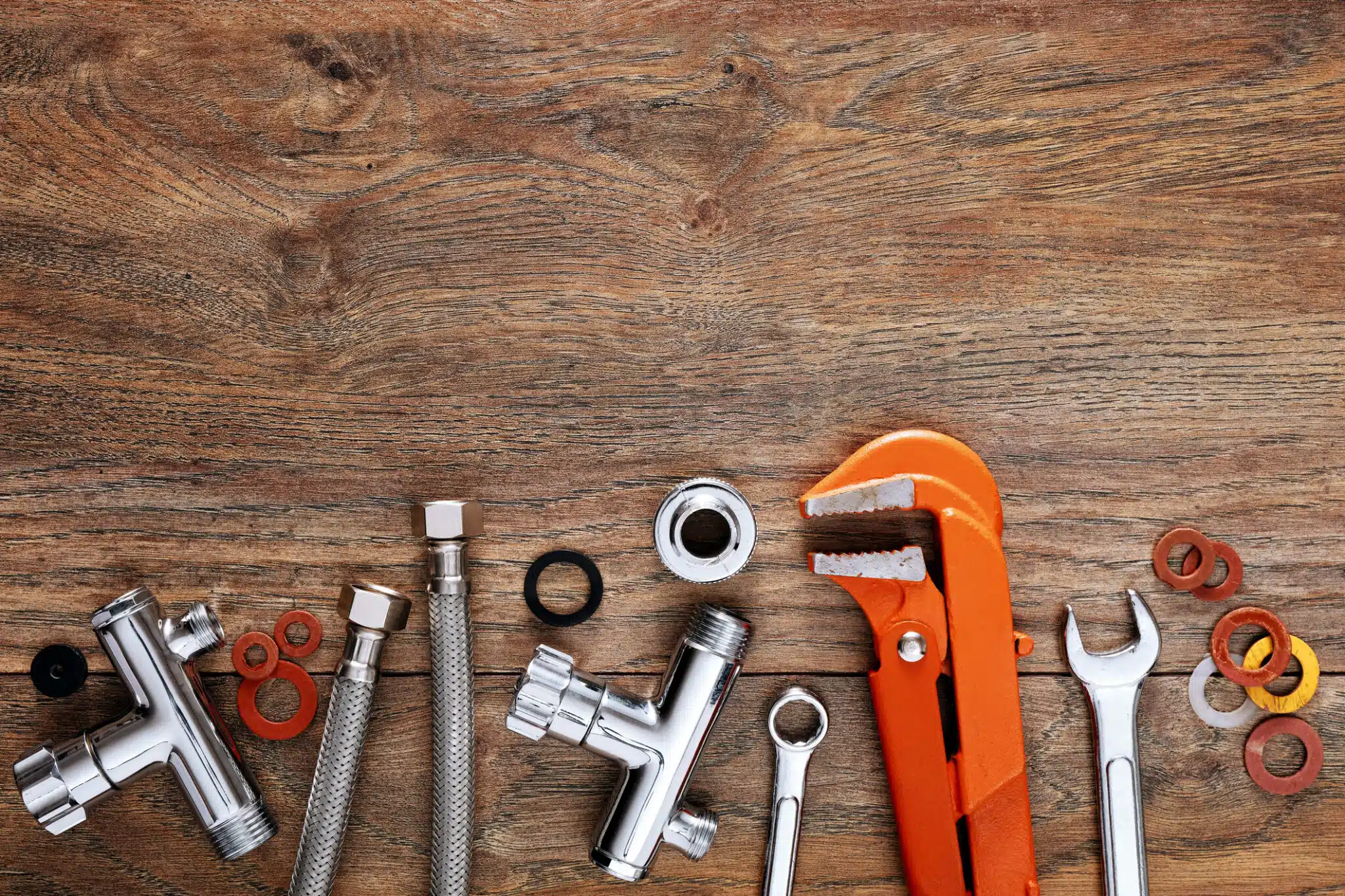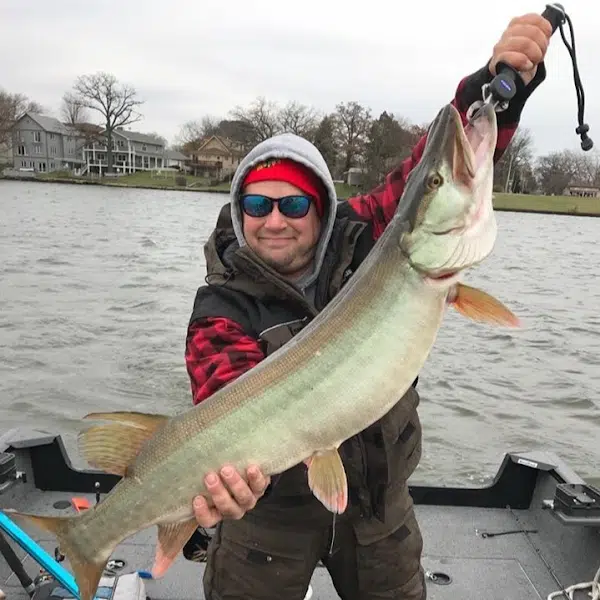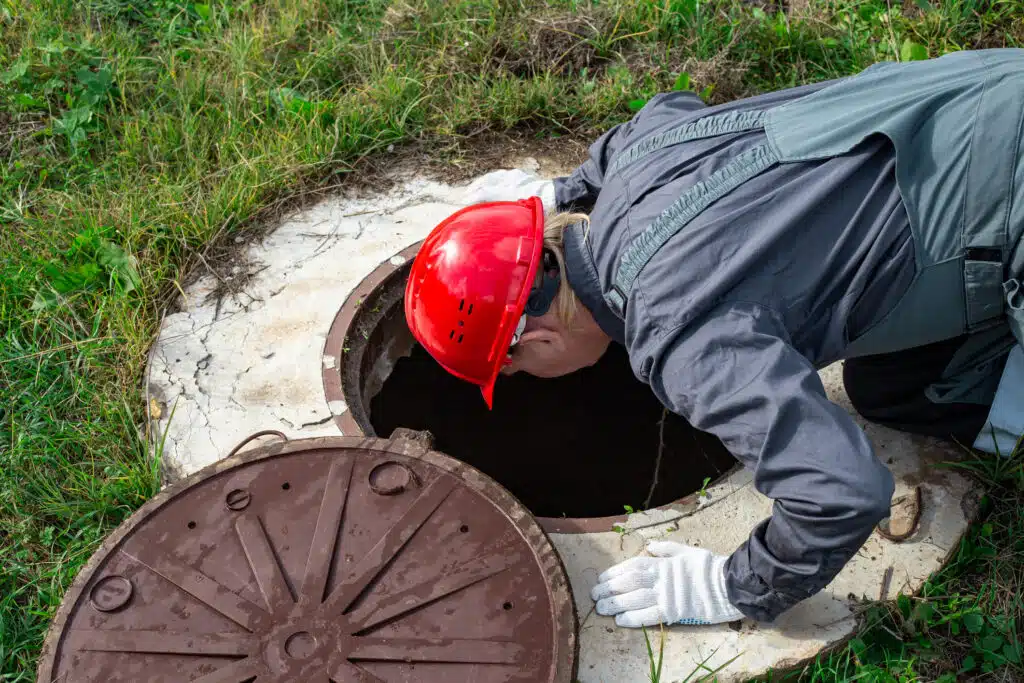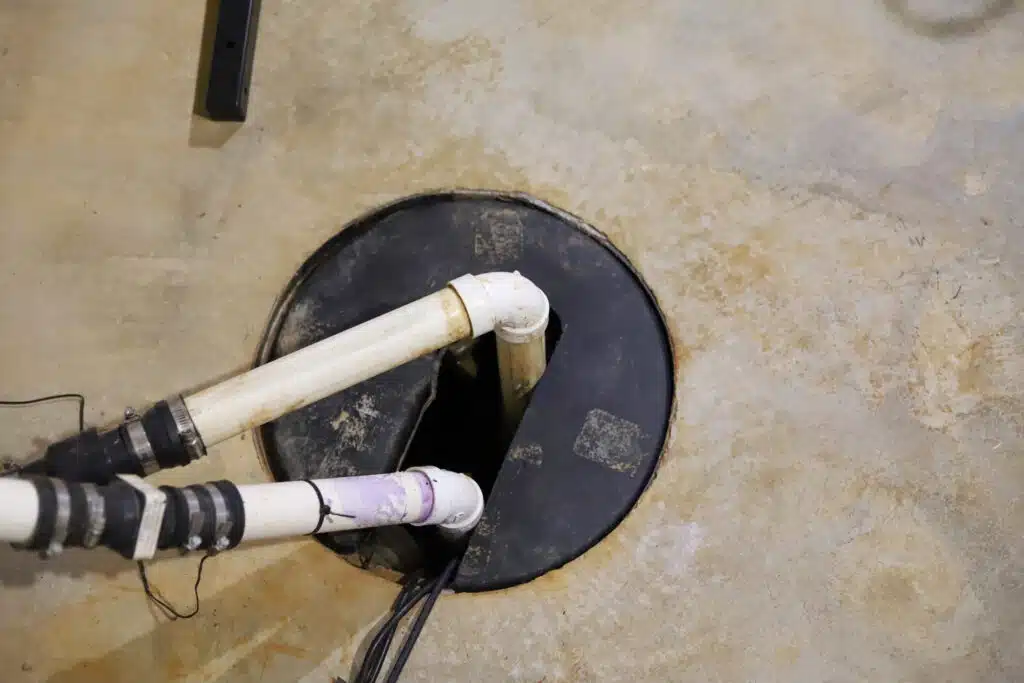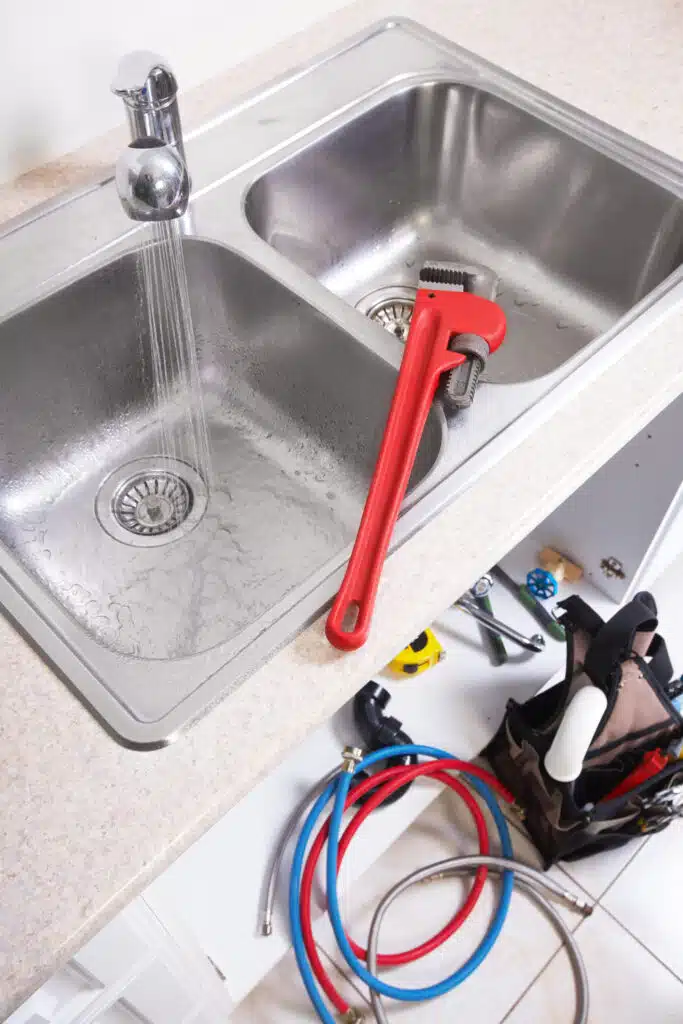Be ready for unexpected plumbing disasters with an emergency plumbing kit! It’s your first line of defense against clogs, leaks, and minor repairs. Essential items include:
- Plunger: Clears clogs in toilets, sinks, and tubs.
- Pipe Wrench: Tightens or loosens pipes and fittings.
- Adjustable Wrench: Handles nuts, bolts, and smaller tasks.
- Plumber’s Tape and Putty: Seals joints and fixtures to prevent leaks.
- Bucket, Gloves, and Flashlight: For catching spills, protection, and visibility.
Having these basics on hand can save you time, money, and stress when emergency plumbing problems strike. Having these basics on hand can save you time, money, and stress when plumbing problems strike. For more serious issues or if you’re unsure how to proceed, don’t hesitate to contact the experts at Benjamin Franklin Plumbing of Lancaster for reliable, professional help.
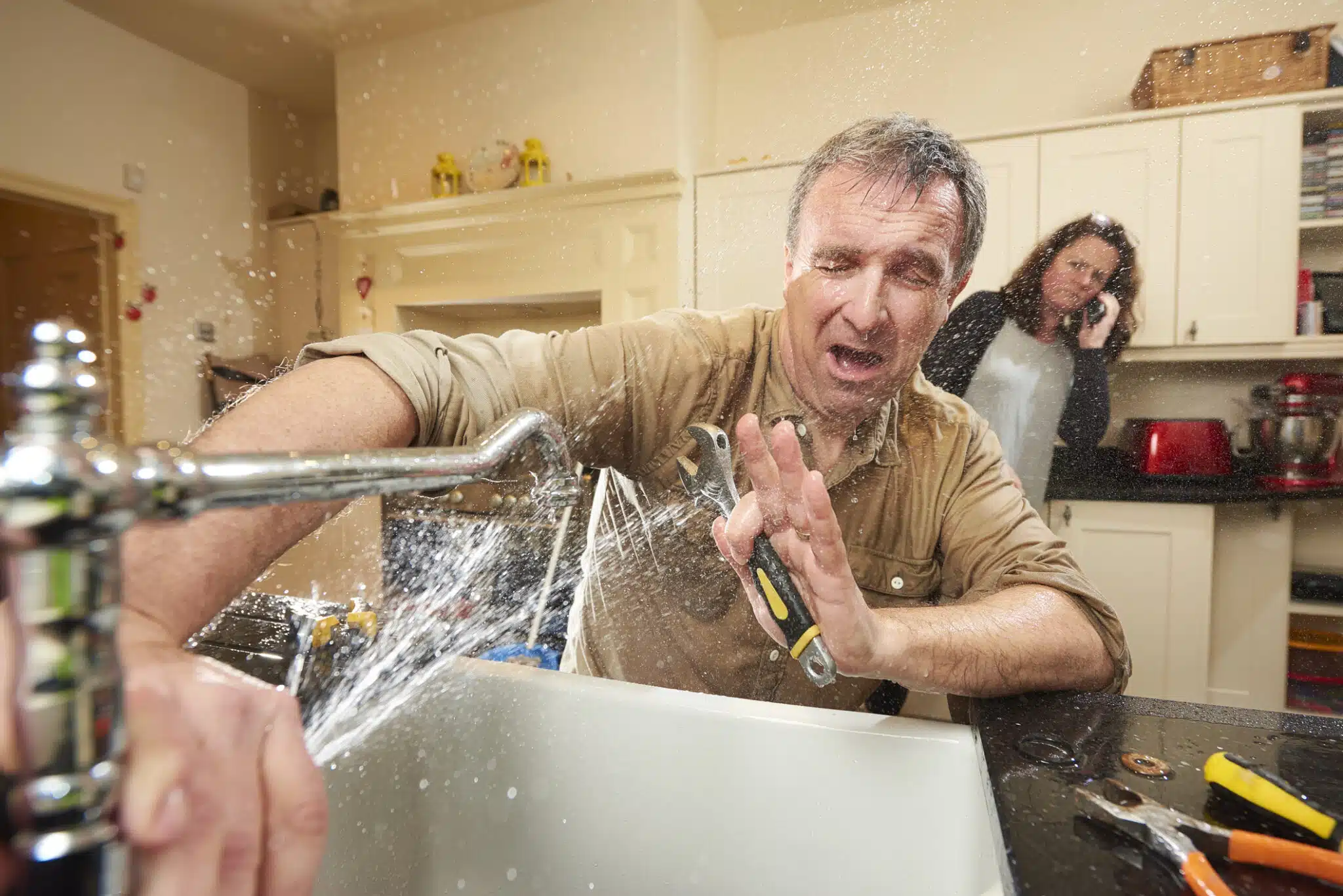
Ever had a plumbing disaster strike out of nowhere? Imagine your toilet overflowing right before guests arrive, or a pipe bursting in the middle of the night. Not fun, right? That’s why having an emergency plumbing kit is a game-changer.
It’s like having a mini tool kit for those unexpected moments when water starts going where it shouldn’t. Whether you’re in Lancaster, York, or Harrisburg, PA, being prepared with the right tools can save you time, money, and a whole lot of stress. Let’s get you set up with the essentials!
What is an Emergency Plumbing Kit?
An emergency plumbing kit is like your superhero toolbox for home plumbing problems. It’s a bunch of essential tools and supplies that you keep at home to handle common plumbing emergencies quickly and easily.
Imagine your sink suddenly clogging up or your toilet refusing to flush—having this kit means you can jump right in and fix things without having to wait for a plumber.
This kit isn’t about becoming a pro plumber overnight; it’s about having the basics to manage small issues before they get out of hand.
It usually includes items like plungers, wrenches, plumber’s tape, and a few other handy things. Think of it like a first-aid kit but for your pipes!
Why You Need an Emergency Plumbing Kit
Plumbing problems rarely happen at convenient times. Imagine a pipe leaking in the middle of the night or your toilet clogging up just as guests arrive. In these moments, having the right tools at your fingertips can make all the difference.
With an emergency plumbing kit, you can tackle small issues right away, saving yourself from potential water damage and expensive repairs. It’s all about being prepared. Plus, fixing minor problems quickly can prevent them from turning into major headaches.
For example, stopping a small leak early can keep it from turning into a big mess that requires a plumber and costs a lot more.
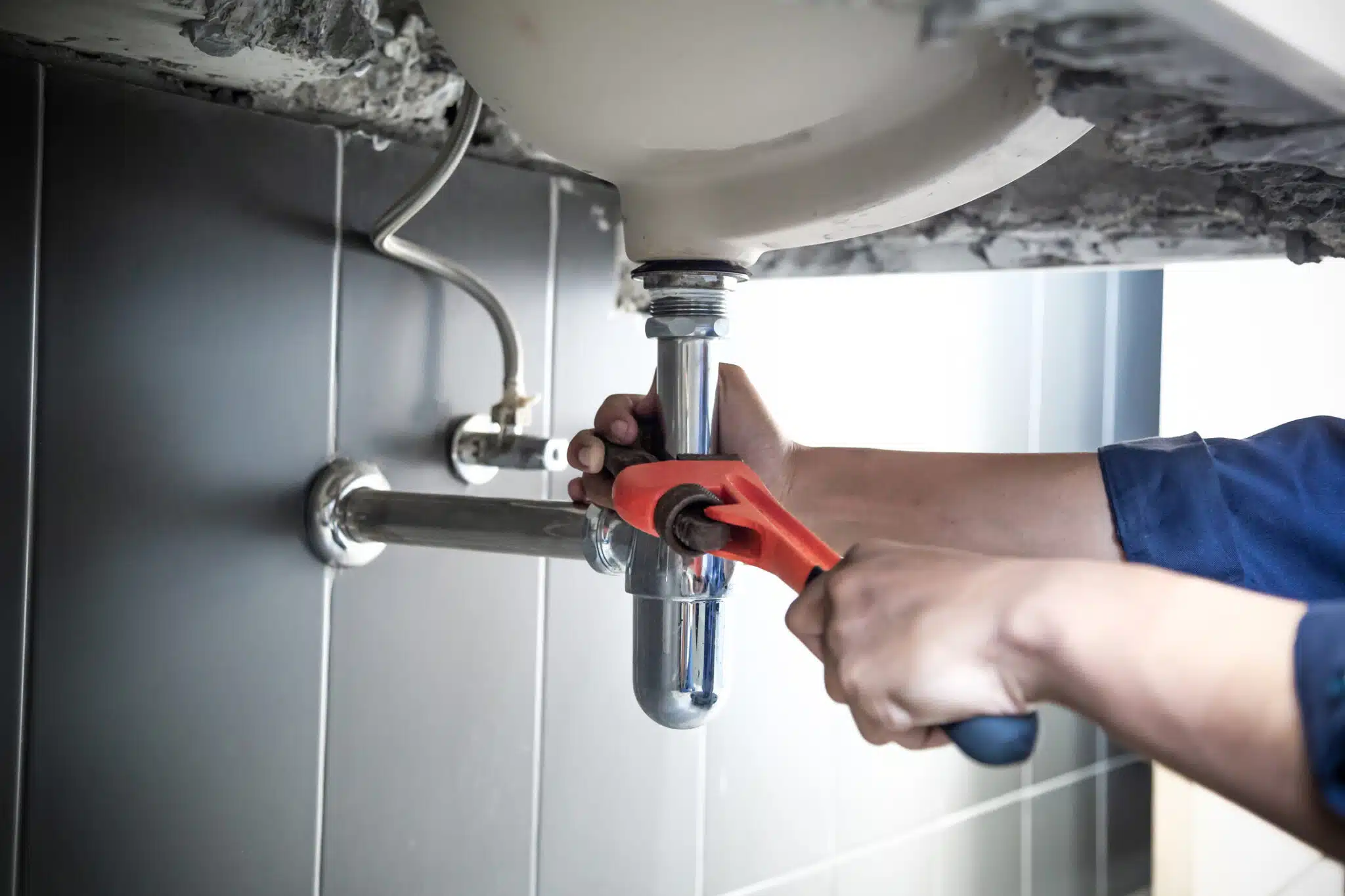
Essential Tools for Your Emergency Plumbing Kit
Plunger
A plunger is a basic but powerful tool that everyone should have. It’s your first line of defense against clogs in toilets, sinks, and tubs. Whether it’s a slow-draining sink or a stubborn toilet blockage, a plunger can usually get things moving again.
There are different types, but a cup plunger works well for sinks and tubs, while a flange plunger is best for toilets.
Just a few strong pumps can often clear the blockage and get things flowing smoothly again. Having a good quality plunger in your kit means you’re always ready for those unexpected clogs.
Pipe Wrench
A pipe wrench is essential for tightening or loosening pipes and fittings. It’s adjustable, so you can use it on various pipe sizes, making it super handy when you need to stop a leak or adjust a pipe.
This tool is particularly useful when working with threaded pipes, allowing you to get a firm grip to turn them. If you’ve got a stubborn leak or need to change out a part, this tool will be your go-to. It’s a must-have for any emergency plumbing kit, giving you the leverage needed to tackle more stubborn plumbing issues.
Adjustable Wrench
An adjustable wrench, also known as a crescent wrench, is perfect for nuts, bolts, and small plumbing tasks. It’s easy to adjust, fits a variety of sizes, and is ideal for minor repairs that need a quick tightening or loosening.
This tool is especially useful when working in tight spaces where a pipe wrench might be too bulky. It’s versatile and can handle everything from tightening faucet fixtures to replacing a showerhead. Keep one of these in your kit, and you’ll be ready for many of the smaller tasks that pop up.
Essential Supplies for Quick Fixes
In addition to tools, your emergency plumbing kit should include some essential supplies to help with quick fixes. These items can help you seal leaks, patch pipes, and keep your plumbing in good shape until you can get professional help if needed. Here are the must-have supplies for your kit:
Plumber’s Tape (Teflon Tape)
Plumber’s tape, also known as Teflon tape, is a thin, white tape that helps create a watertight seal on threaded pipe connections. It’s super easy to use—just wrap it around the threads a few times before screwing things together. This helps prevent leaks in joints and connections, which is especially handy for faucets and showerheads.
Plumber’s tape is inexpensive but incredibly effective at keeping things drip-free. Having a roll in your kit means you can quickly seal connections and stop leaks before they cause bigger problems.
Plumber’s Putty
Plumber’s putty is a soft, moldable material that seals around faucets, drains, and other fixtures to prevent leaks. It’s great for creating a watertight seal in areas where water might seep through, like around the base of a faucet.
You just roll it into a snake-like shape and press it into place; it hardens slightly over time to hold everything snugly. Plumber’s putty is perfect for those small jobs that require a quick, flexible seal. Keep it in your kit for when you need a quick fix around sinks and tubs.
Pipe Repair Tape
Pipe repair tape, often called self-fusing silicone tape, is a lifesaver when it comes to temporary fixes for leaking pipes. This stretchy tape can be wrapped tightly around a leak to create a seal, stopping water from gushing out.
It works on wet or dry surfaces and can handle high pressure, making it ideal for emergency situations.
Pipe repair tape isn’t a permanent fix, but it buys you time until a plumber can make a more durable repair. It’s a quick and easy solution to keep water contained and prevent damage to your home.
Safety and Cleaning Essentials
When dealing with plumbing issues, it’s not just about having the right tools—safety and cleaning are also key. These essentials help you stay safe and keep your workspace tidy while you’re handling emergency repairs. Here’s what you should include in your emergency plumbing kit:
Bucket
A bucket might seem simple, but it’s one of the most important items in your emergency plumbing kit. It’s perfect for catching water from leaks, draining pipes, or holding tools and supplies while you work.
Whether you’re dealing with a leak under the sink or a burst pipe, a bucket can help prevent water from making a mess all over your floor. Plus, it’s handy for mixing cleaning solutions or even transporting parts. Keeping a sturdy bucket in your kit means you’re always ready to manage spills and keep things contained.
Gloves and Safety Gear
Gloves and safety gear are a must to protect yourself while tackling plumbing jobs. Rubber gloves keep your hands clean and safe from dirty water, sharp edges, and harsh chemicals.
If you’re working in tight or dark spaces, safety goggles can protect your eyes from splashes and debris. Additionally, having a basic pair of knee pads can make those uncomfortable positions on hard surfaces a bit easier on your joints. Having the right safety gear in your kit ensures you can handle repairs without risking injury.
Flashlight or Headlamp
A flashlight or headlamp is crucial for working in dark or hard-to-reach places like under sinks, behind toilets, or in basements. Plumbing problems rarely occur in well-lit areas, and having a reliable light source helps you see exactly what you’re doing. A headlamp is especially useful because it keeps your hands free, allowing you to work more efficiently.
Good lighting helps you identify issues more clearly and ensures you don’t miss any important details during your repairs. Including a flashlight or headlamp in your kit means you’ll never be left in the dark during an emergency.
Advanced Tools for Serious Plumbing Issues
While basic tools and supplies can handle most minor plumbing problems, sometimes you encounter more serious issues that need a bit more power. Including a few advanced tools in your emergency plumbing kit can prepare you for tougher challenges. Here are two advanced tools to consider adding to your emergency plumbing kit:
Drain Snake or Auger
A drain snake, also known as an auger, is a flexible tool that helps clear stubborn clogs deep inside pipes. It’s great for when a plunger just isn’t enough to get the job done, especially for clogs in sinks, tubs, or even toilets.
The snake works by extending down the pipe and either breaking up or pulling out the blockage. While it takes a little practice to use, it’s a valuable tool for those more persistent clogs that won’t budge. Keeping a drain snake in your kit means you’re ready for clogs that go beyond the reach of basic tools.
Plumbing Snake Camera
A plumbing snake camera, or inspection camera, allows you to see inside your pipes without having to tear things apart. This tool is especially useful for diagnosing hidden problems, like cracks or serious blockages, that are out of sight.
The camera is attached to a long, flexible cable that you can feed into the pipes, giving you a clear view of what’s going on inside. It’s a more advanced tool, but incredibly helpful for identifying the root of persistent plumbing issues.
While it’s not necessary for everyone, having a plumbing snake camera in your kit can save you time and frustration by pinpointing the exact problem.
Basic Plumbing Knowledge to Know
How to Shut Off the Water Supply
The first thing you should know is how to shut off the water supply in case of an emergency. If a pipe bursts or a major leak occurs, turning off the water can prevent flooding and further damage.
Most homes have a main water shut-off valve, usually located in the basement, garage, or near the front of the house.
Familiarize yourself with where it is and how to turn it off—usually, it’s as simple as turning a lever or knob clockwise. Knowing how to quickly shut off the water can save you from a lot of mess and expense.
Understanding Common Pipe Types
Understanding the types of pipes in your home can help you handle repairs more effectively. Here are the most common types of pipes you might encounter, each with its own pros and cons:
- Copper Pipes: Durable and long-lasting, but can corrode over time. Often used for water supply lines and are known for their high heat tolerance.
- PVC Pipes: Lightweight, easy to work with, and inexpensive. However, they are not suitable for hot water as they can warp or degrade under high temperatures.
- PEX Pipes: Flexible and easy to install, PEX is resistant to freezing and cracking, making it a popular choice for modern plumbing systems. It can be used for both hot and cold water lines.
Knowing what type of pipes you have can help you select the right tools and supplies for your repairs, ensuring you’re always prepared to tackle any emergency plumbing issues that come your way.
Identifying Common Plumbing Issues
Being able to identify common plumbing issues, like leaks, clogs, and drips, can help you react quickly and appropriately. For example, a slow drain might indicate a clog forming, while a dripping faucet could point to a worn-out washer.
Knowing the signs of these problems early on can help you take action before they escalate. Sometimes, just a little knowledge can turn a daunting task into a manageable one, and understanding these basics puts you in a stronger position to deal with plumbing emergencies.
When to Use Your Emergency Plumbing Kit
Knowing when to use your emergency plumbing kit is just as important as having one. It’s designed to handle minor issues, but it’s also essential to recognize when a problem is beyond a quick fix. Here’s a breakdown of when to use your kit and when it’s time to call in the pros.
Minor vs. Major Issues
Your emergency plumbing kit is perfect for minor issues like small leaks, clogs, or drips. For instance, if your toilet is clogged or you notice a small drip under the sink, grab your plunger or pipe wrench and get to work.
These are usually straightforward problems that you can handle on your own with the right tools and a bit of know-how.
However, if you’re facing major issues like a burst pipe, sewage backup, or no water at all, it’s best to call a professional plumber immediately. These problems can cause significant damage and often require specialized equipment and expertise.
Safety Precautions
Always prioritize safety when using your emergency plumbing kit. Wear gloves to protect your hands, especially when handling chemicals or dealing with dirty water. Use a bucket to catch leaks and avoid slippery floors by cleaning up spills quickly.
If you’re working in a confined space, like under a sink, make sure you have proper ventilation and use a flashlight or headlamp to see clearly. And remember, if a situation feels unsafe or if you’re unsure about how to proceed, don’t hesitate to call a professional. It’s better to be safe than sorry.
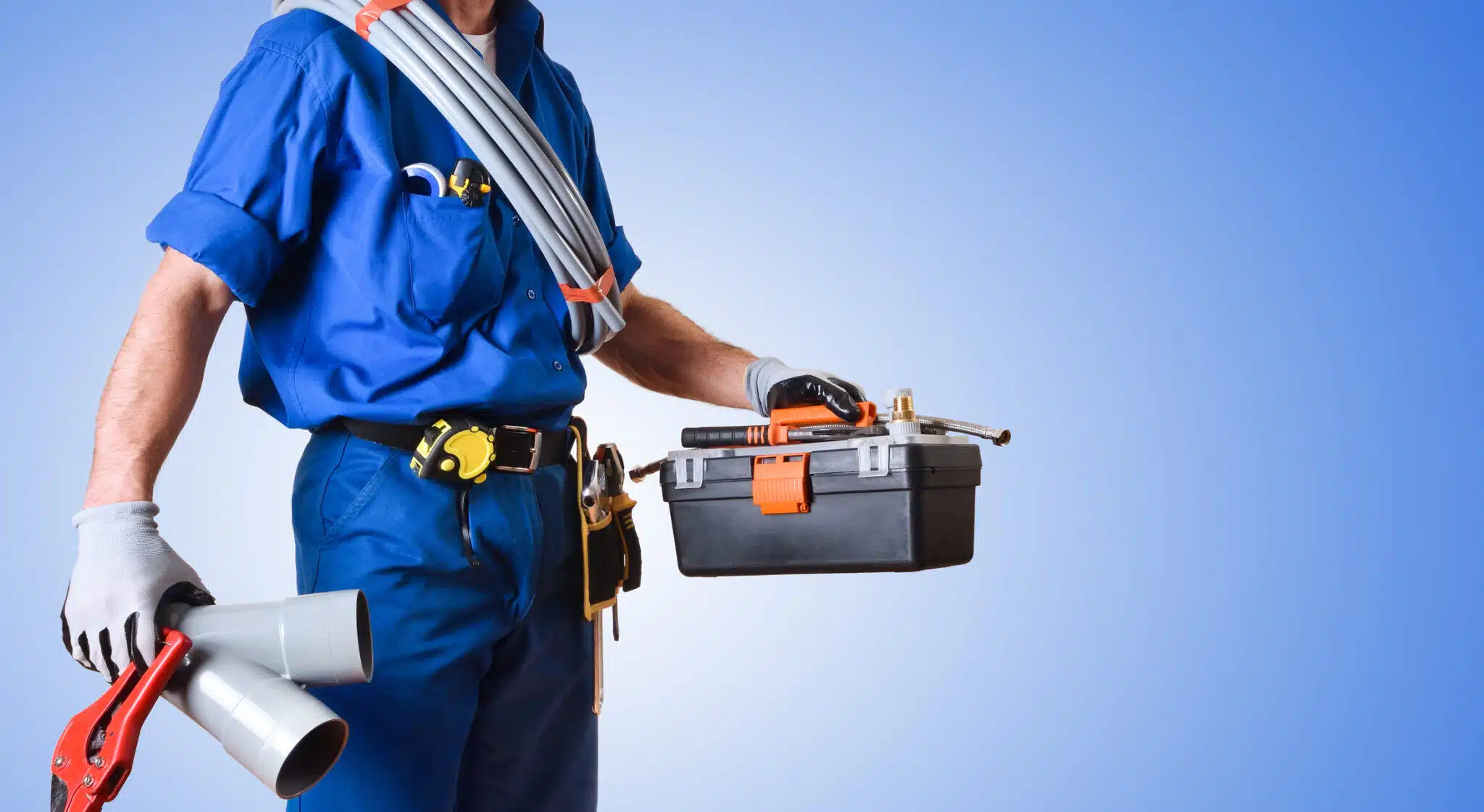
Ready for Plumbing Emergencies? We’ve Got Your Back!
Don’t let emergency plumbing problems catch you off guard! Whether you’re in Lancaster, York, or Harrisburg, PA, Benjamin Franklin Plumbing of Lancaster is here to help with reliable, expert service when you need it most.
From leaky pipes to stubborn clogs, our professional plumbers are just a call away. Be prepared with your emergency plumbing kit, but when things get tough, trust the pros to get the job done right. Contact us today!
Emergency Plumbing FAQs
What should be in an emergency plumbing kit?
An emergency plumbing kit should include basic tools like a plunger, pipe wrench, adjustable wrench, plumber’s tape, plumber’s putty, pipe repair tape, a bucket, gloves, safety gear, and a flashlight. For more advanced issues, consider adding a drain snake and a plumbing snake camera.
Can I fix a leaky pipe myself?
Yes, minor leaks can often be fixed using tools from your emergency plumbing kit. You can use pipe repair tape for temporary fixes or plumber’s tape to seal joints. However, if the leak is significant or you’re unsure about the repair, it’s best to call a professional.
How do I know when to call a plumber?
Call a plumber if you’re dealing with major leaks, burst pipes, sewage backups, or if minor issues persist despite your emergency plumbing efforts. Persistent problems like these often require specialized skills and tools that go beyond what’s in your kit. Also, call a pro if you notice a sudden drop in water pressure, rusty water, or any situation that feels unsafe or beyond your skill level.
Why is my toilet still clogged after plunging?
If plunging doesn’t clear the clog, it could be due to a deeper blockage or something stuck further down the drain. For these stubborn emergency plumbing clogs, using a drain snake can help reach and break up blockages that a plunger can’t handle. If that doesn’t work, it’s time to call a plumber to avoid causing more damage to your plumbing system.
Is it safe to use chemical drain cleaners?
Chemical drain cleaners can sometimes clear minor clogs, but they are harsh and can damage pipes over time, especially if used frequently. These products can also pose a safety risk if not handled properly. In emergency plumbing situations, it’s usually safer and more effective to use a plunger, or drain snake, or call a professional for persistent clogs that require more than a simple fix.






